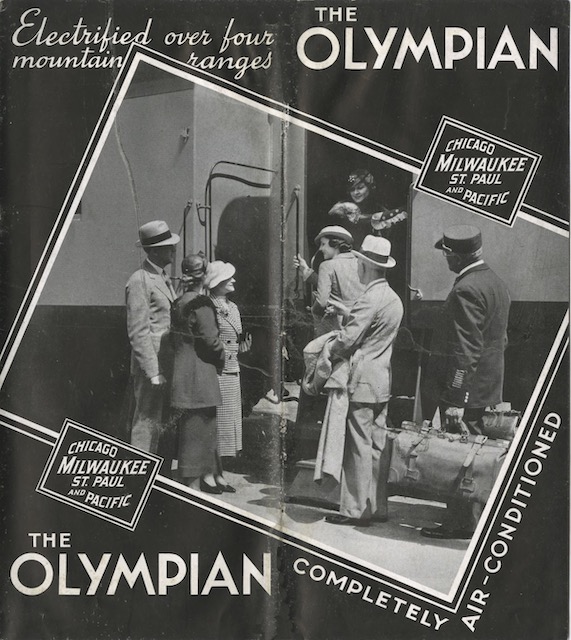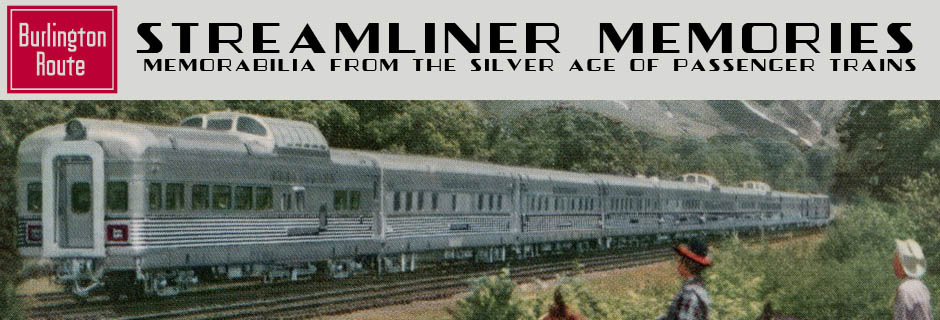As noted yesterday, the Olympian was the Milwaukee Road’s entry into the battle of the limiteds for passenger travel to and from the Pacific Northwest, competing directly against the North Coast Limited for much of its journey and slightly less directly against the Empire Builder and even less directly the Portland Rose. Being late to the party and in the midst of a 1935 bankruptcy besides, the Milwaukee didn’t do as well as the other railroads in this corridor.
 Click image to download a 5.5-MB PDF of this 16-page booklet.
Click image to download a 5.5-MB PDF of this 16-page booklet.
The Olympian of 1936, the date of this booklet, had the amenities needed to compete: air conditioning, a diner providing “faultless service,” a shower-bath, and a barber and valet service. It didn’t have a ladies maid like the California limiteds, but neither did the North Coast Limited or Empire Builder of the day.
The Milwaukee had something that its competitors did not: 656 miles of electrified service, “nine times as much transcontinental mileage as all other railroads combined.” The only other transcontinental railroad with an electrified district was the Great Northern, which used electric power over 71 miles between Wenatchee and Skykomish.
Electric power provided “the cleanest, smoothest, most delightful travel in the world,” this booklet insisted. “Jolts, jars and sidesway are eliminated.” I can see how electric power could reduce jolts and jars, but I’m not sure how it could eliminate sway.
Unfortunately, the high cost of electrification is one of the things that sent the St. Paul Road into an earlier bankruptcy in 1925, from which it emerged in 1928 as the Milwaukee Road. If electrification had been as successful as the railroad liked to claim, it would have finished electrifying the 227-mile gap between Othello, Idaho and Avery, Washington, as it had originally planned.
This gap necessitated changes of locomotives at Othello and Avery, which wasn’t a serious problem in the steam era when frequent locomotive changes were the rule. When steam was replaced by Diesels that were capable of going thousands of mile without change, however, the electrified districts became a major annoyance.
Typical of the railroad’s history of poor timing, it decided to take down the wires and rely on Diesels just before petroleum prices shot upwards in the early 1970s, helping to push it into a third and final bankruptcy in 1977. But all that was unknown to travelers in 1936.
